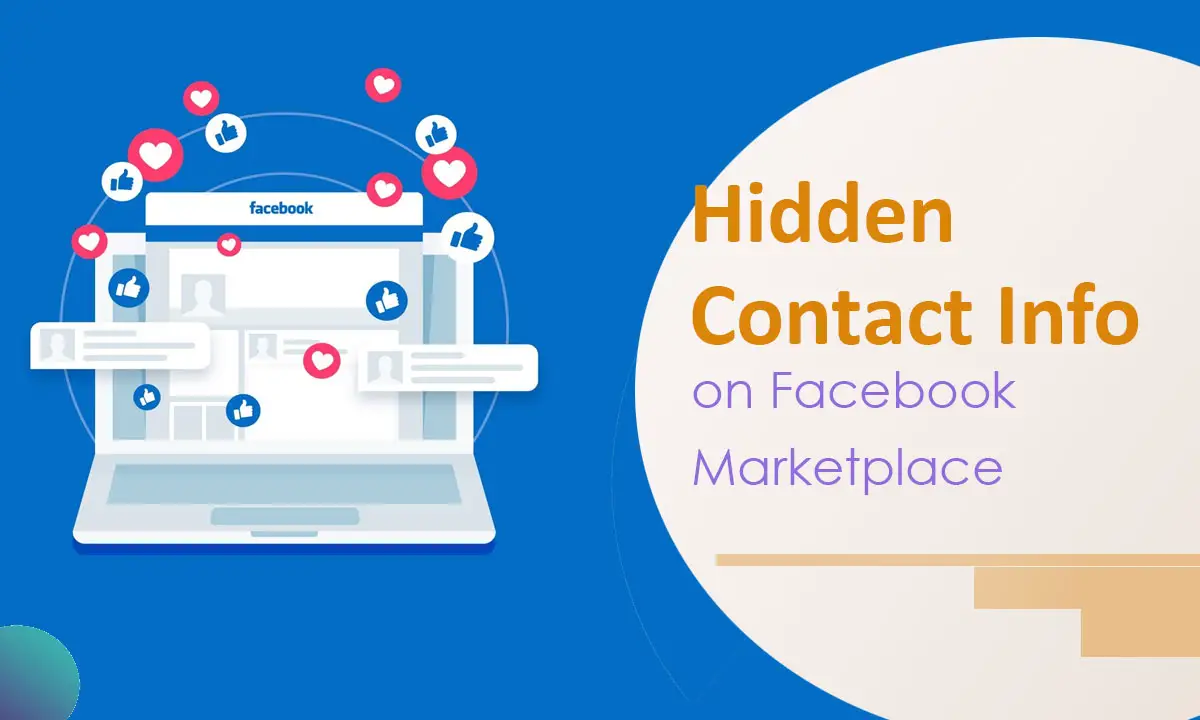Facebook Marketplace has evolved into one of the most convenient platforms for buying and selling items locally. Whether you’re in search of a used bicycle, looking to offload an old coffee table, or even browsing for rental properties, the Marketplace has it all. However, as with any platform dealing with personal transactions, user safety is a top priority. This is one reason why Facebook often hides certain information—especially contact details—from plain sight.
You may have stumbled upon a listing that mentions “[hidden information]” where you expected to find a phone number or an email address. Frustrating, right? Especially when you’re seriously interested in the item and would like to speak directly with the seller.
The good news is that there are legitimate ways to uncover this hidden information if you really need it. In this article, we’ll walk you through what this hidden info is, why it’s concealed, and how to view it responsibly on both mobile and desktop browsers.
What is the Hidden Information on Facebook Marketplace?
When browsing Facebook Marketplace listings, you might notice that in the description section, instead of a phone number or email, it says something like “[hidden information].” This placeholder is Facebook’s way of filtering out sensitive content that violates its privacy and safety protocols. But what exactly is being hidden?
Typically, the concealed information includes:
- Phone numbers
- Email addresses
- Direct web links
- Contact handles (e.g., WhatsApp usernames or Instagram profiles)
These details are often embedded by sellers in the description, expecting buyers to reach out through alternate channels. Facebook intervenes and masks these details to protect both parties, mainly from scams, phishing attempts, or unwanted contact outside the platform. Facebook prefers that communication happen via Messenger to ensure a traceable and secure interaction.
Why Does Facebook Hide This Information?
Understanding Facebook’s motive helps paint a clearer picture. Here are a few primary reasons why the platform conceals this information:
- User Safety: By hiding phone numbers and email addresses, Facebook reduces the risk of users being targeted by scammers, spammers, or bots.
- Policy Enforcement: Facebook has guidelines against promoting transactions that take place outside its platform, as it cannot guarantee the safety or legitimacy of such exchanges.
- Data Protection: With growing concerns over data privacy and security laws like GDPR, Facebook minimizes the risk of users’ data being misused by anonymizing contact information.
- Encouragement of In-Platform Messaging: Facebook wants users to use Messenger to initiate conversations, helping it monitor and manage interactions for safety and data analytics purposes.
Although these precautions are in place for a good reason, they can sometimes inconvenience serious buyers trying to connect with sellers. Fortunately, there are workarounds—both ethical and effective.
You may like this also: How Many People Use Facebook
Is It Really Possible to View the Hidden Information?
Yes, in most cases, you can uncover the hidden information. The reason this is possible is because the original information still exists in the listing’s HTML source—it’s just visually masked by Facebook’s interface. You can use a few methods to simulate a mobile browser environment or access the listing outside the app to reveal these hidden details.
However, keep in mind that this doesn’t involve hacking or any kind of illegal activity. You’re simply changing the way the content is rendered so that masked data becomes visible.
Let’s break down the most effective methods to uncover hidden info on Facebook Marketplace.
Method 1: View Hidden Info on Desktop Using Chrome Developer Tools
This is one of the most effective and commonly used methods. It works by making Facebook think you’re accessing the listing from a mobile browser, which often bypasses the “[hidden information]” mask.
Step-by-Step Instructions:
- Open Facebook Marketplace on Chrome:
Go to facebook.com/marketplace and locate the listing you’re interested in. - Open Developer Tools:
PressF12on your keyboard (orCtrl + Shift + Ion Windows,Cmd + Option + Ion macOS) to bring up the Chrome Developer Tools panel. - Enable Mobile View:
In the Developer Tools panel, find the small icon at the top that looks like a tablet and smartphone (the “Toggle Device Toolbar”). Click it. - Choose a Mobile Device Profile:
After enabling the mobile view, you’ll see a dropdown menu that says “Dimensions.” Choose a device like “iPhone X” or “Galaxy S5”. - Refresh the Page:
PressF5or manually refresh the page. Facebook will now load the listing as if it’s being viewed on a mobile device. - Scroll to the Description:
Check the description again. In many cases, the full phone number, email, or web address that was hidden earlier will now appear clearly.
✅ Pro Tip: Zoom in and scan through the content carefully. If it still says “[hidden information],” try changing to another mobile profile or refreshing again.
Method 2: Access the Listing Through a Mobile Web Browser
This method is handy if you’re using your phone and don’t want to mess with desktop tools.
Here’s what to do:
- Open the Facebook App:
Find the listing that shows “[hidden information]” in the description. - Copy the Listing Link:
Tap the “Share” button (usually a curved arrow icon) and select “Copy link.” - Open Your Mobile Browser:
Launch a browser like Chrome or Safari on your mobile device. - Paste the Link and Load the Page:
Tap the address bar, paste the copied link, and hit “Go.” - View the Listing:
Once the page loads in the browser, scroll down to the item description. The masked information often reveals itself here, especially if Facebook’s mobile browser rendering is looser than in-app views.
This method is simple and quick. No special tools required—just a browser and your curiosity.
Method 3: Ask the Seller Directly
If neither of the above methods works, or if you’re concerned about ethical boundaries, there’s always the straightforward way: just ask. Click on the “Message” button in the listing and reach out to the seller via Facebook Messenger. You could say:
“Hi, I’m interested in your listing. Could you please share your phone number or email for quicker communication?”
More often than not, sellers are responsive—especially if they’re serious about making a sale. This method aligns perfectly with Facebook’s guidelines and ensures transparency on both sides.
Method 4: Try an Alternative Browser (Firefox, Brave, or Edge)
If Chrome doesn’t work as expected or you’d prefer another browser, you can use Firefox, Microsoft Edge, or Brave. All of these offer similar developer tools.
Here’s a brief how-to using Firefox:
- Load the listing on Facebook.
- Press
Ctrl + Shift + Mto toggle responsive design mode. - Select a mobile device profile.
- Refresh the page.
The steps are nearly identical to Chrome’s, and the success rate is generally the same.
Additional Tips and Warnings
✔ Respect Privacy
Remember that Facebook hides this information for a reason. If you uncover someone’s phone number or email, do not misuse it. Only contact them in relation to the listing, and never share their details with third parties.
✔ Don’t Rely on External Extensions
You might come across browser extensions or third-party tools that claim to “uncover” hidden information automatically. Avoid these. They can compromise your privacy, contain malware, or violate Facebook’s terms of service.
✔ Screenshot for Reference
If you do manage to reveal the hidden data, consider taking a screenshot for reference. Sometimes listings disappear or get deleted by Facebook.
✔ Hidden Info Isn’t Always Present
In some cases, “[hidden information]” appears even though the seller didn’t include actual contact details. It’s just Facebook’s placeholder mechanism, not necessarily a sign of withheld data.
Why Some Listings Still Don’t Reveal the Info
Even after all these attempts, you may find that some listings stubbornly continue to show “[hidden information].” That’s because:
- The seller used odd formatting (e.g., “five55-123-four567”) to avoid detection.
- Facebook’s latest updates may have increased masking strictness.
- The listing genuinely has no personal contact information.
In such cases, it’s best to reach out via Messenger and move forward respectfully.
Conclusion: Responsible Access is Key
Facebook Marketplace is a powerful platform that brings buyers and sellers together in meaningful ways. While the “[hidden information]” tag can be frustrating, there are effective and responsible methods to view the concealed details if needed.
Whether you’re using Chrome Developer Tools, accessing the listing via a mobile browser, or simply asking the seller directly, always prioritize ethical behavior and respect user privacy.
The ability to uncover this information should never be used for spam, scams, or harassment. If your intention is genuine—to purchase an item or clarify a listing—then using these tools responsibly is perfectly acceptable.

